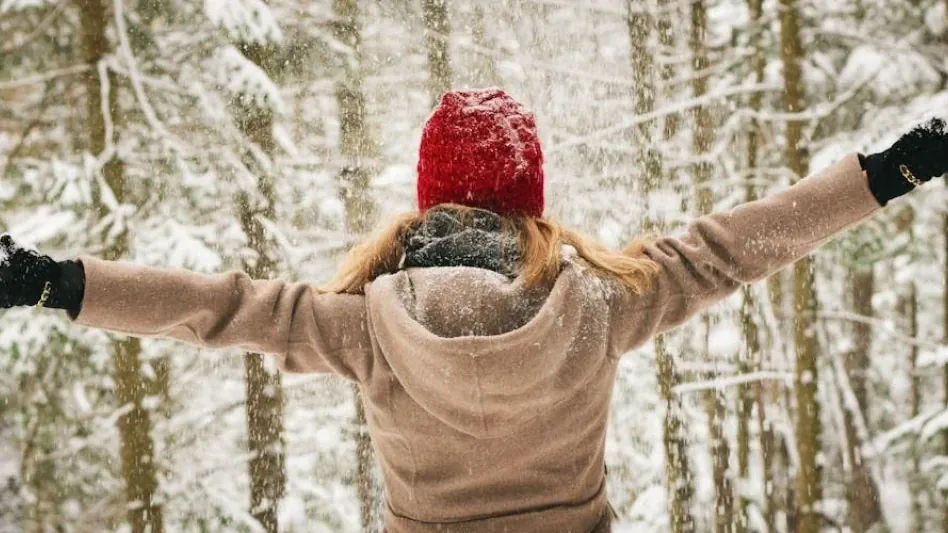As temperatures drop and winter approaches, many people prepare for the flu season by getting vaccinated and taking extra precautions against illness. However, there remains a widespread misconception that cold weather directly causes colds and other respiratory infections. This article seeks to debunk that myth by explaining how cold weather can indirectly increase susceptibility to illnesses like the common cold, COVID-19, flu, and RSV through various mechanisms that weaken the immune system and create an environment favorable for viruses.
The Influence of Cold and Dry Air on Virus Transmission
Virus Survival in Cold and Dry Conditions
One key factor contributing to increased respiratory infections during cold weather is the way colder temperatures and drier air allow respiratory viruses to remain airborne longer. Dr. Winston Rajendram and Dr. Andrew Pekosz have provided insights into this phenomenon, explaining that respiratory droplets from coughs and sneezes linger in the air longer in cold, dry weather, significantly increasing virus transmission rates. This means that even just breathing in a space where an infected person has coughed or sneezed can raise the risk of contracting a virus.
Furthermore, the cold, dry air can have a direct impact on the human body’s physical defenses against pathogens. The mucous membranes in the nasal passages and upper respiratory tract, which are essential for trapping and expelling viruses, can become dry and less effective when exposed to cold air. This reduction in natural defenses creates an easier path for viruses to infect the respiratory system, thereby increasing the likelihood of falling ill. This combination of environmental and biological factors explains why people often experience a higher incidence of respiratory infections in cold weather.
Indoor Gatherings and Poor Air Circulation
Another contributing factor to the spread of respiratory illnesses during colder months is people’s tendency to spend more time indoors. The cold weather discourages outdoor activities, leading to more indoor gatherings where people are in close proximity. Poor air circulation in these indoor environments facilitates the spread of viruses, as the lack of fresh air means that respiratory droplets carrying viruses can accumulate and remain in the air longer. This is particularly true in spaces with inadequate ventilation or crowded settings.
Comparing summer and winter behaviors highlights this issue further. During the warmer months, people are more likely to spend time outdoors, where the open air reduces the risk of virus transmission. The contrast with winter behaviors, where indoor activities are more common, underscores the increased potential for respiratory infections during colder weather. Therefore, it is crucial to understand that it is not the cold itself causing the spike in infections, but rather the behaviors and environmental conditions associated with it.
Dampened Immune Responses in Cold Weather
Immune System Response to Cold Temperatures
In addition to the environmental factors that facilitate virus transmission, cold weather can also directly affect the immune system’s ability to fight off infections. Exposure to cold temperatures can dampen the immune responses, particularly in the nasal passages and upper respiratory tracts. The body’s natural defense mechanisms, such as the production of mucus and the activity of immune cells, can be impaired by the cold, leaving individuals more susceptible to infections.
Research has shown that lower temperatures can hinder the function of immune cells that are critical in fending off respiratory viruses. This impairment means that the body is less equipped to respond quickly and effectively when exposed to pathogens. Coupled with the already weakened mucous membranes due to dry air, the overall immune response is significantly compromised during the winter months. As a result, individuals are at a higher risk of contracting illnesses like the common cold, flu, and COVID-19.
Importance of Vaccinations and Preventive Measures
Given the increased susceptibility to respiratory infections during cold weather, taking preventive measures becomes essential. One of the most effective ways to protect against illnesses like the flu is through vaccination. Health authorities recommend that everyone aged six months and older receive an annual flu shot. Last year’s severe flu statistics, which included 470,000 hospitalizations and 28,000 deaths, underscore the importance of this preventive measure. Additionally, vaccines for COVID-19 and RSV are also available, particularly for vulnerable populations such as the elderly and those with compromised immune systems.
Practical advice for minimizing the transmission of viruses includes dressing appropriately for cold weather by wearing hats and gloves, using masks to prevent spreading illness, avoiding touching the face, and coughing or sneezing into tissues or elbows. Regular handwashing with soap and water is also crucial in preventing the spread of viruses. By following these guidelines, individuals can significantly reduce their risk of contracting and spreading respiratory infections during the winter months.
Conclusion
As temperatures fall and winter draws near, many people start preparing for flu season by getting vaccines and taking extra steps to avoid sickness. However, there’s a common but incorrect belief that cold weather directly causes colds and other respiratory illnesses. This misconception needs to be addressed. Cold weather doesn’t directly lead to illnesses like the common cold, flu, COVID-19, or RSV. Instead, lower temperatures can indirectly increase the likelihood of getting sick. Several mechanisms explain this: Cold air can dry out the nasal passages, reducing their ability to trap viruses, while spending more time indoors in close contact with others helps viruses spread more easily. Additionally, the winter months can weaken the immune system, making it less effective at fighting off infections. Understanding these factors can help people take more effective steps to stay healthy during the winter season, rather than mistakenly blaming the cold weather itself for their ailments.









